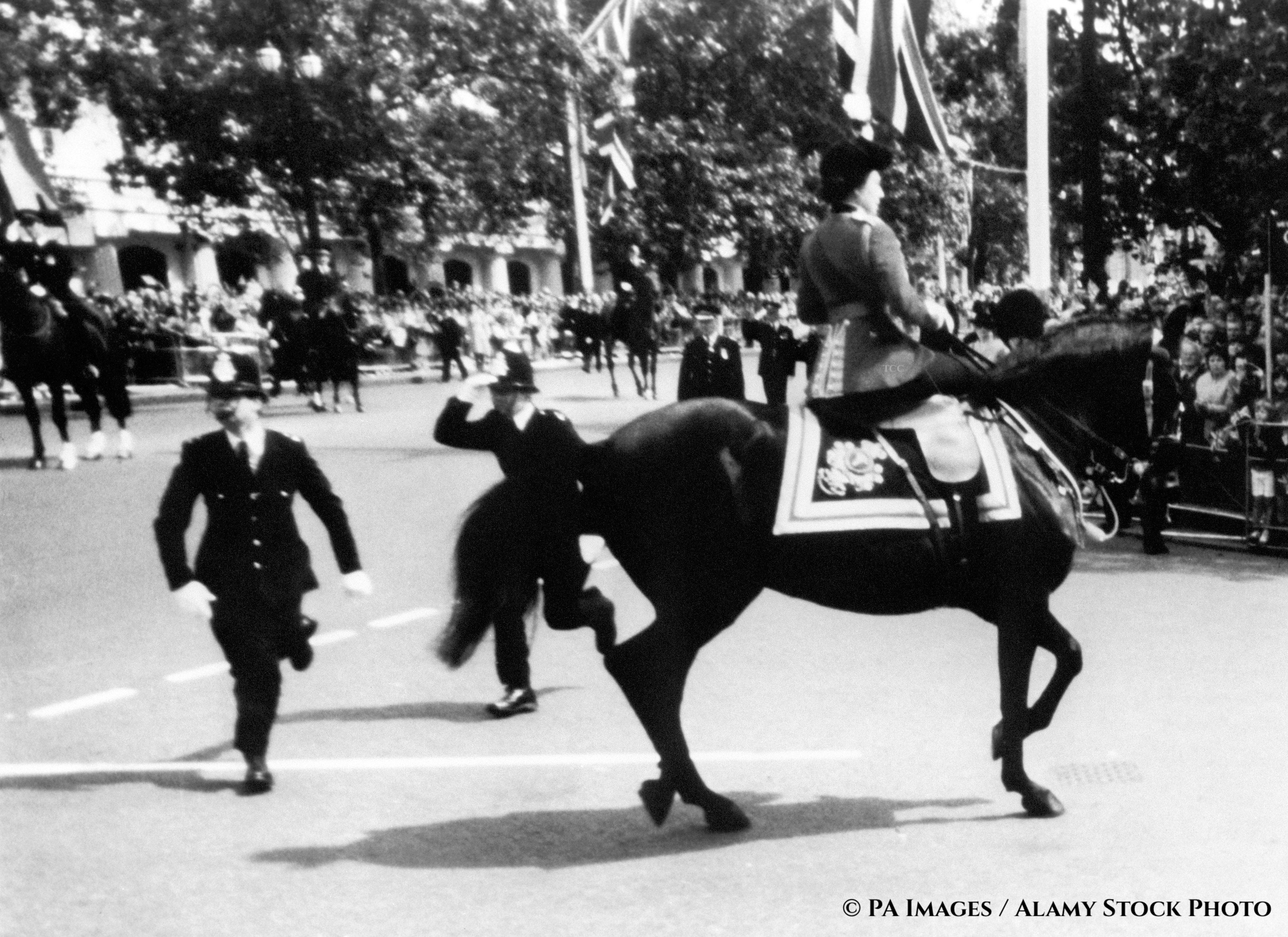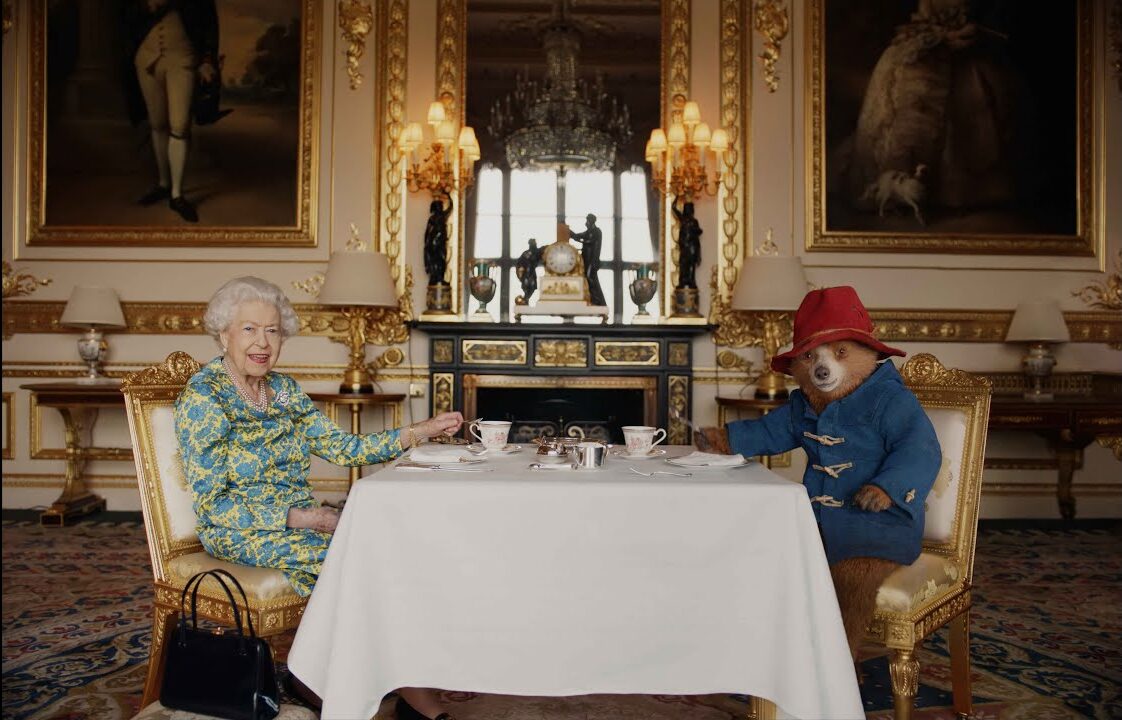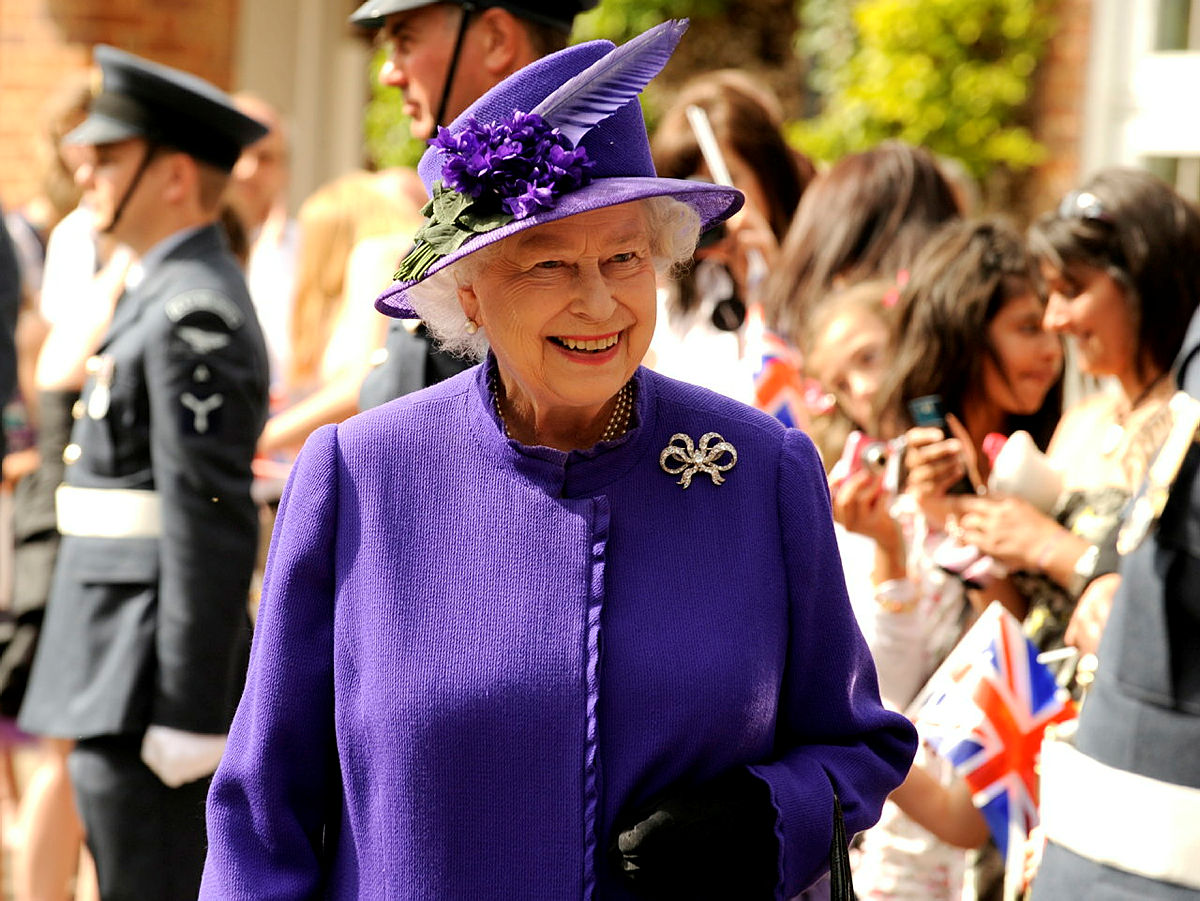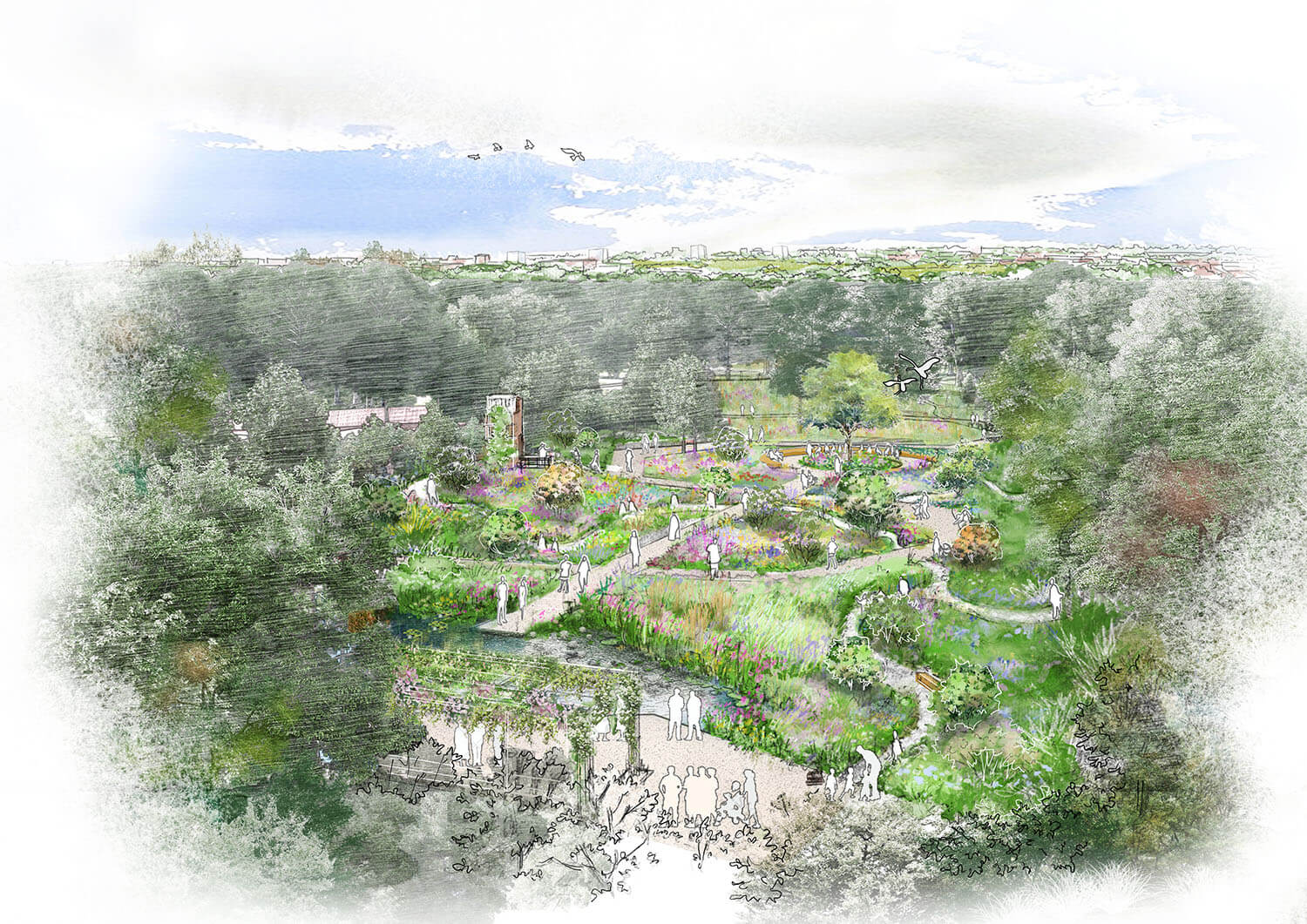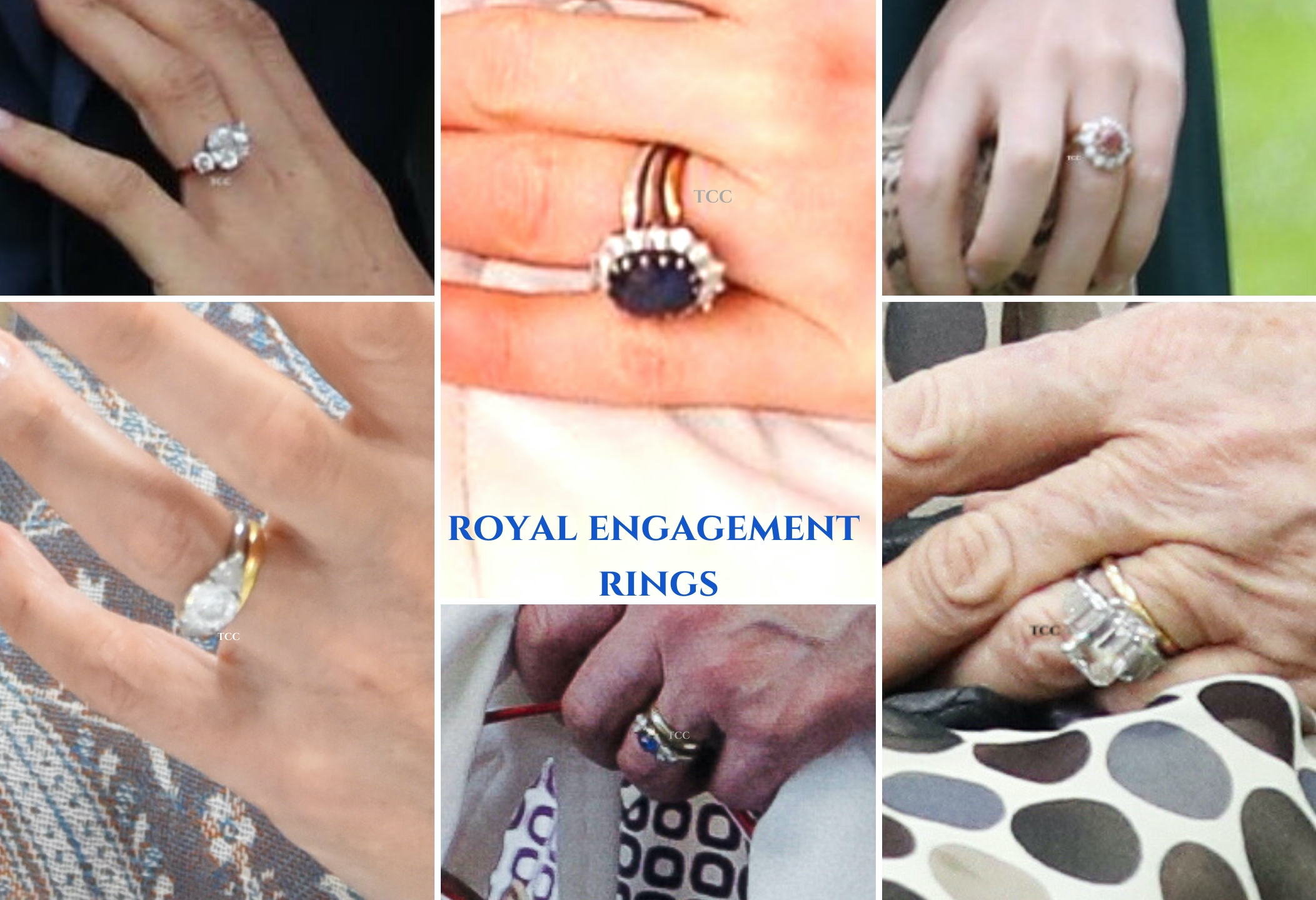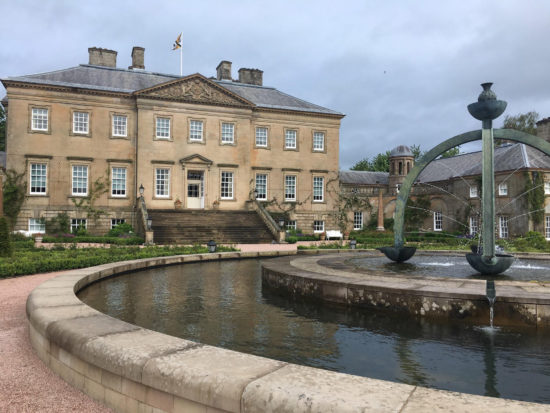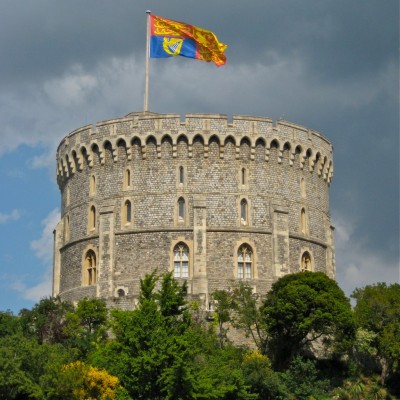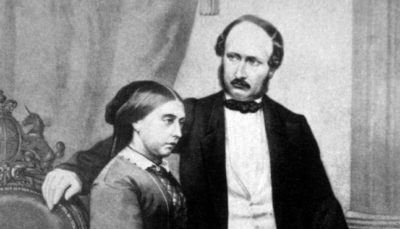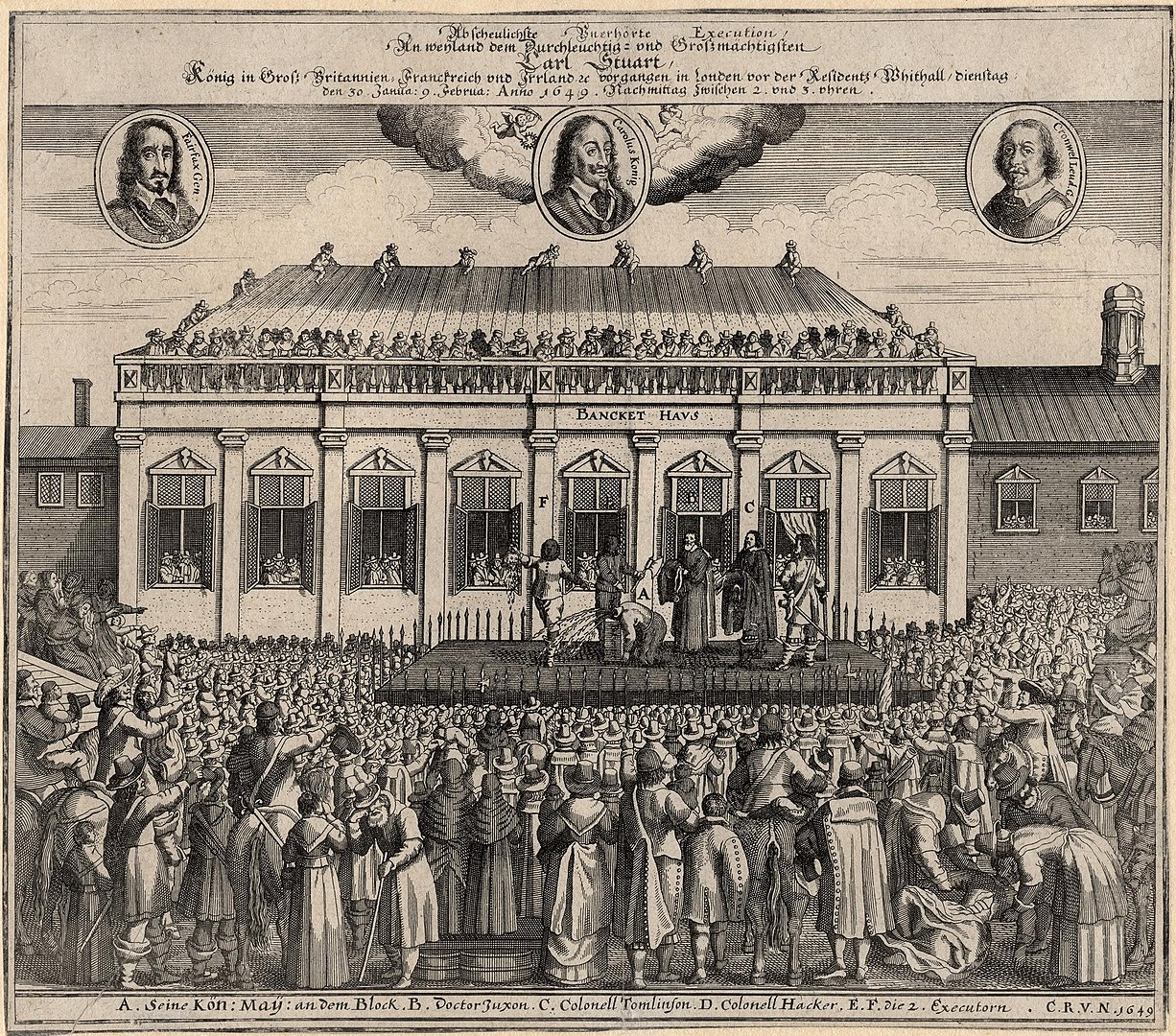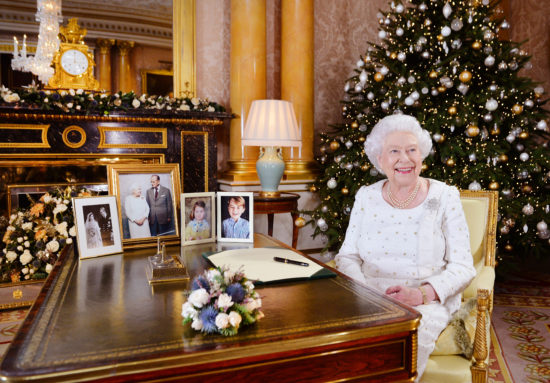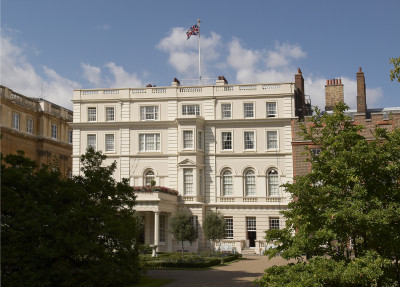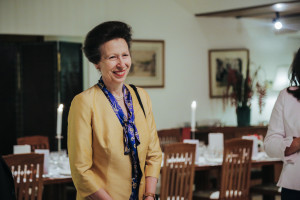The Duke of Edinburgh was born Prince Philip of Greece and Denmark in Mon Repos, Corfu on 10th June 1921; he was the youngest of five and the only son of Prince Andrew of Greece and Denmark and Princess Alice of Battenberg.
His elder sisters were Margarita, Theodora, Cecilie, and Sophie.
Philip and his family was exiled due to a revolution in Greece; his uncle, King Constantine I, was forced to abdicate and the 18-month-old was smuggled out of the country in an orange crate onto HMS Calypso.
Philip’s father, Prince Andrew, was arrested and banished; the family settled in Paris, where the young Prince attended The Elms, an English-speaking school, before moving to Britain. He had something of a nomadic childhood with various family members, and never really settling for too long.
He was educated at Schule Schloss Salem in Berlin before following its founder to Gordonstoun, a boys’ school in the north of Scotland that focused on discipline and contribution, offering challenge he relished. Philip left the school in 1939, heading to Dartmouth for naval training.
Before marrying Princess Elizabeth in 1947, Philip was commissioned in the Royal Navy, rising to the rank of Lieutenant during the Second World War, one of the youngest first Lieutenants in the Royal Navy. In training, he graduated as the best cadet in his course.
His naval career saw him in active combat at the Battle of Crete, and Philip was mentioned in dispatches for his service during the Battle of Cape Matapan, proving his loyalty to his adopted home nation. Two of his brothers-in-law, Prince Christoph of Hesse (husband of Sophie), and Berthold, Margrave of Baden (married to Theodora), fought on the enemy side for the German Navy.
Embed from Getty Images
Embed from Getty Images
In January 1946, the war-hero returned home, and was posted as an instructor at HMS Royal Arthur, the Petty Officers’ School in Corsham, Wiltshire.
Most reports talk of Philip meeting Princess Elizabeth first in 1939, when she, 13, and Princess Margaret joined the King and Queen toured the Royal Naval College, Dartmouth; Philip, 18, was one of the royal party’s escorts. But they both attended the wedding of the Duke and Duchess of Kent in 1934, when Elizabeth was a bridesmaid.
They wrote letters to one another over the next seven years, occasionally meeting at society events, and remained close. It was in the summer of 1946 the Philip asked George VI for his daughter’s hand in marriage; he agreed, on the proviso that any formal engagement be delayed until Elizabeth’s 21st birthday the following April.
An excellent German speaker, thanks to his heritage, Philip had previously, however, stated he thought of himself as Danish; a portrait in 2018 marked this connection.
Philip married Elizabeth on the 20th November 1947. The marriage would produce four children – Charles in 1948, Anne in 1950, Andrew in 1960 and finally Edward in 1963. Philip and Elizabeth would go on to be the longest married couple in the history of the Royal Family at just over 73 years.
For the wedding, the King created Philip ‘The Duke of Edinburgh’, as well as Earl of Merioneth and Baron Greenwich, additionally granting him the style of ‘His Royal Highness’. It wasn’t until 1957 that The Queen created her husband a Prince of the Realm, however.
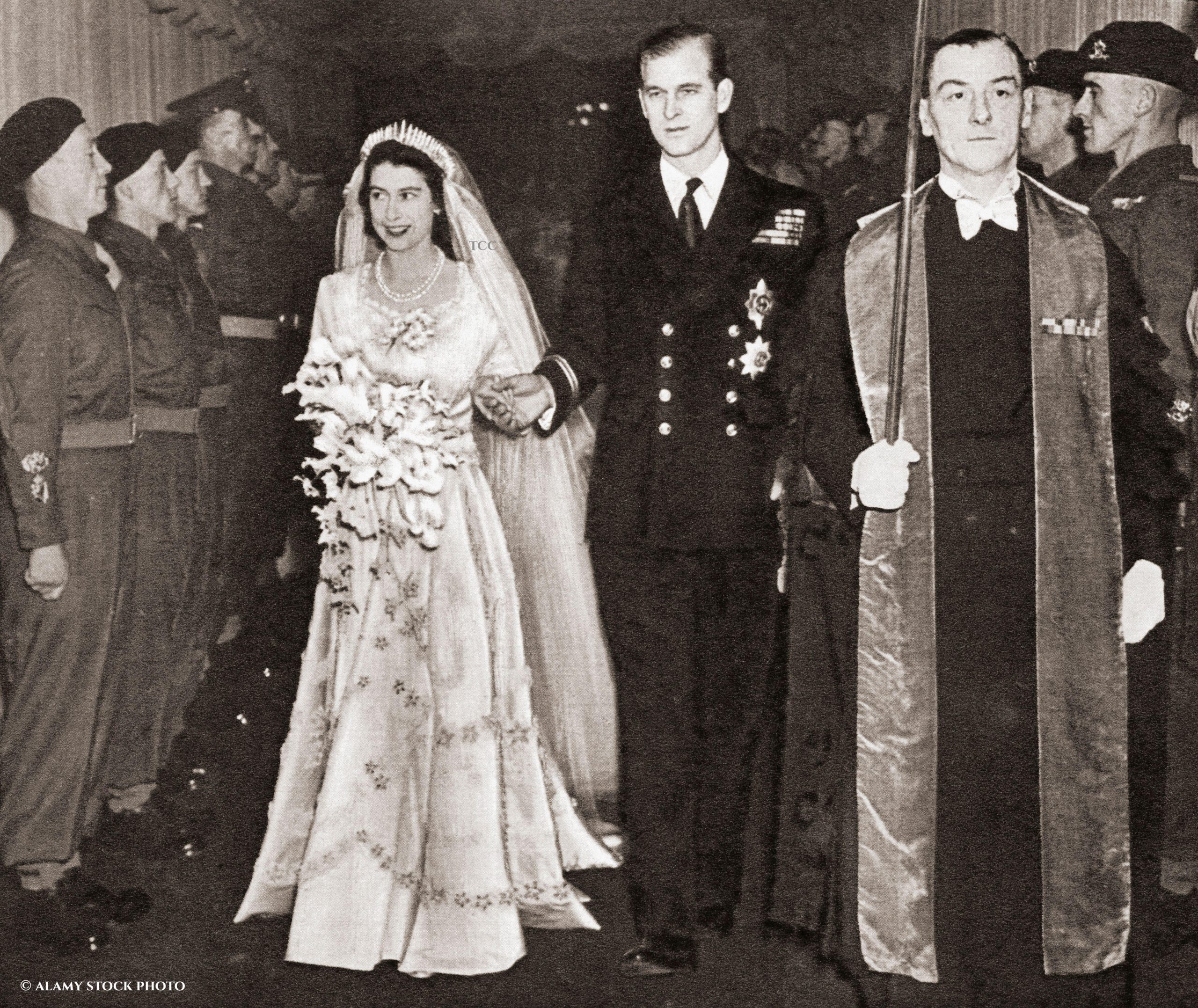
The wedding day of Princess Elizabeth of York and Philip, The Duke of Edinburgh in November 1947.
The Duke continued with his naval career and, in 1950, was appointed to his own command HMS Magpie. In July 1951, Philip would take leave of the Royal Navy due to his father-in-law’s bad health, having been stationed in Malta for a short time, leading a relatively normal life.
He would never return to his promising career, however, and later said he was sorry that he never got to. He has previously told personnel to stay in uniform as long as they are allowed.
George VI would die in February 1952 while Philip and Elizabeth were on a Commonwealth tour. Philip was the person who informed his wife of the sad news of her father’s passing – and that she had become Queen.
While Philip was head of his family, as the husband of a monarch, he had no official constitutional role and had to create his own. He was never granted official status as Prince Consort, but it was a de facto position he took as The Queen’s husband.
He struggled with the old guard at the Palace to modernise the Monarchy while trying to find a place for himself. As part of the generation that had firm expectations of gender roles within a marriage, it seems he was none too happy at kneeling before his wife at her 1953 coronation, in which he declared himself her ‘liege man of life and limb’.
One of the notable battles was that of the name his children would take, which he would lose in the short term but ultimately win: non-titled descendants of The Queen’s use the surname ‘Mountbatten-Windsor’, ensuring his family name lives on.
The Duke did succeed in modernising the Monarchy, shaping it into the institution we see today. He relaxed protocol and made the Royal Family more visible and accessible. It is said that 20% of the British population has met Prince Philip; he also got rid of debutant balls in favour of the annual garden parties.
One of Philip’s most famous roles was as creator of The Duke of Edinburgh Award, which he launched in 1956. He was heavily involved in the day-to-day running of the award which has been given out to over six million young people in the UK.
In a time when hardly anyone was speaking of conservation and climate change, the Prince Consort was one of the biggest pioneers in that area. Philip co-founded the World Wildlife Fund, now known as the World Wide Fund for Nature, and also became its first president.
The Duke took a great interest in British industry and all it could achieve, famously telling a group of industrialists in 1961: “Gentlemen, it’s time we pulled our fingers out.”
Any organisation that asked Philip to take a role for them, as president or patron, would soon find out that he didn’t want to be a figurehead. He would regularly attend meetings and insisted that he be fully briefed on everything that was happening. He was also not shy in giving his own opinions.
In later years, the Duke would focus more on religion and philosophy. By 1991, he had co-written three books on religion and they sat in his library alongside 453 more on the same topic.
But the role Philip is most famous for is being the ‘strength and stay’ of his wife, always a few steps behind her during their engagements together. He once explained his main role was to “ensure the Queen can reign”.
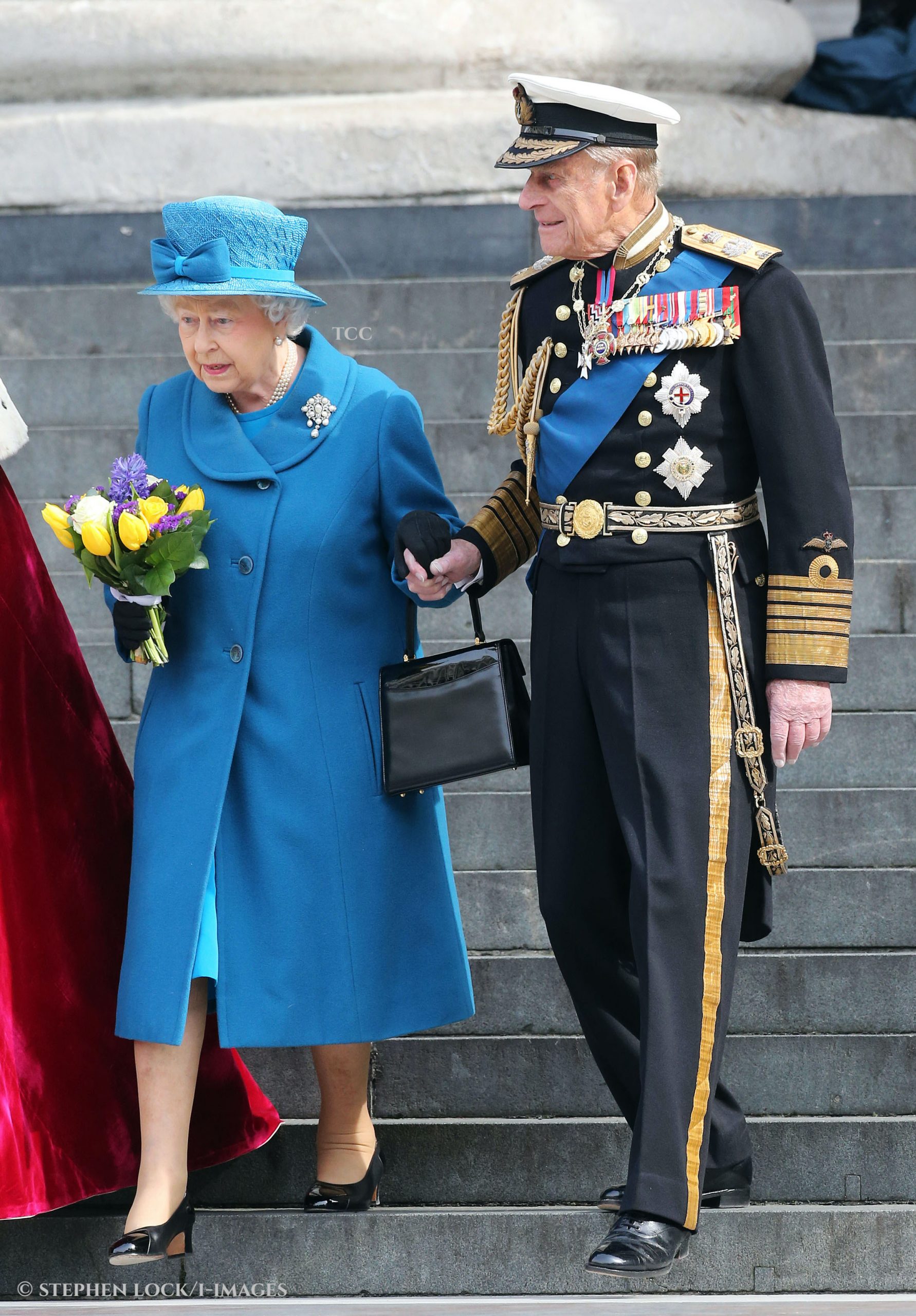
The Duke of Edinburgh leaves behind his widow, The Queen. They are pictured in 2015, holding hands as they leave a service at St.Paul’s Cathedral in London to mark 13 years of UK military operations in Afghanistan
In August 2017, Prince Philip stepped back from royal duties at the age of 96. He may be most noted in recent times for his ‘gaffes’, but it has calculated that he carried out 22,219 solo engagements from 1952 to 2017.
The Duke moved from London to spending most of his time at Sandringham, where he stayed at Wood Farm. March 2020 changed that with the pandemic, where he and The Queen based themselves at Windsor Castle.
Despite retiring, Philip kept himself busy and still held hundreds of patronages which he worked tirelessly for and took a great interest in. He could still be seen at family events and carried out the odd engagement here and there.
Forever busy, the Duke could not rest even in retirement. When not keeping up with his patronages and military affiliations, he could be seen carriage driving at Windsor, something it is understood he helped granddaughter Lady Louise to learn.
He was a keen sportsman, something he kept up into his mid nineties. The photo below is from 2019.
In his younger days he played polo, which he did not give up until he was 50. He flew airplanes well into his sixties and he also sailed. He gave up driving at the age of 97 following a car accident near Sandringham.
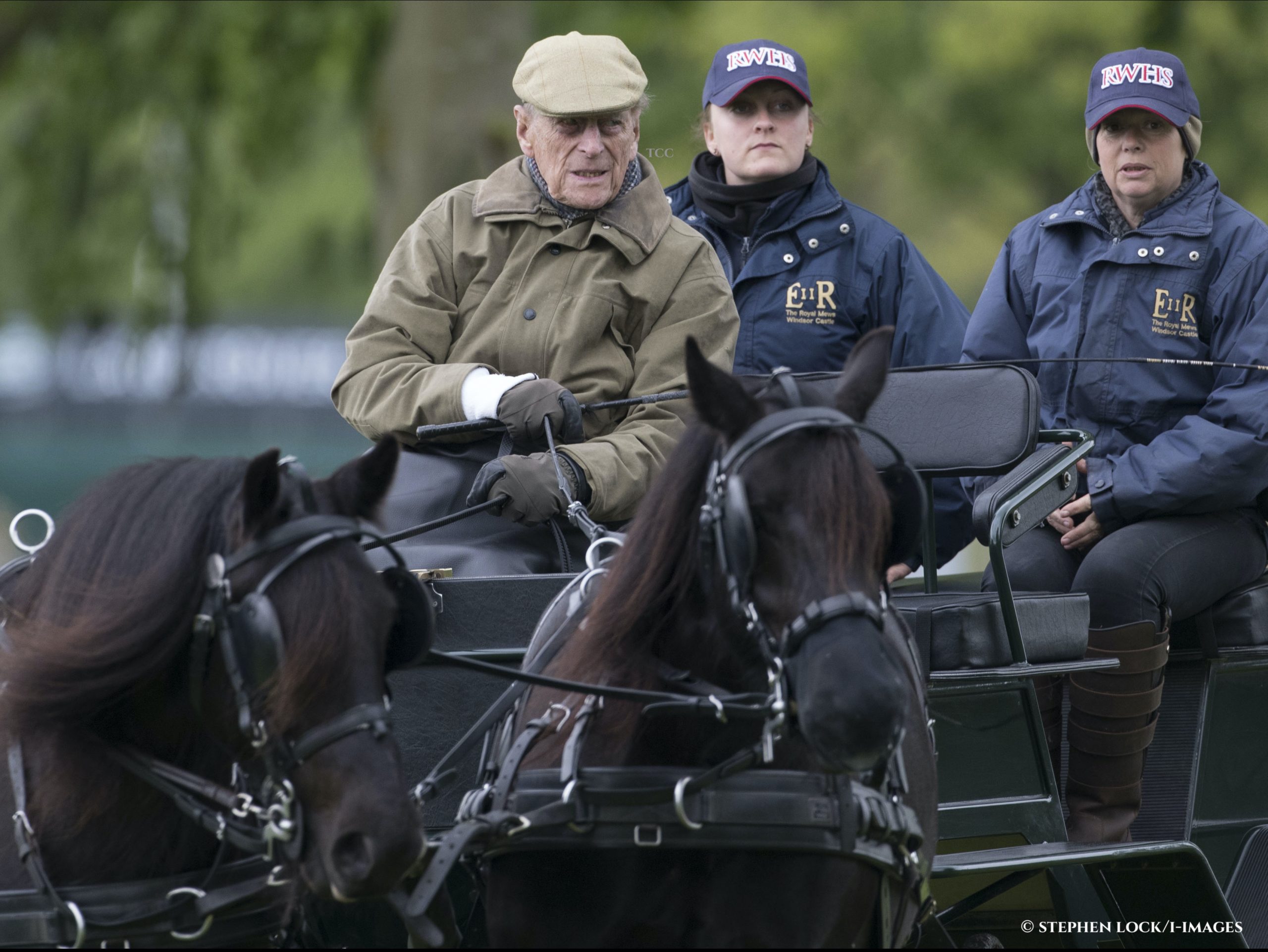
Prince Philip, The Duke of Edinburgh driving a carriage on the second day of Royal Windsor Horse Show in 2019
The Duke took great interest in the raring of his children, although it could sometimes be said that his relationship with his eldest could be rocky in those early years. He was a family man, who loved to play boardgames with his family and bonded with them over outdoor pursuits.
While a public figure, he was a private man and the breakdown of his children’s marriages, and the intrusion of the press, was not easy for him to deal with. He tried his best to help his daughter-in-law, The Princess of Wales, as he had once been in her position – an outsider the old guard did not understand.
A Prince of Greece and Denmark, a Lieutenant in the Royal Navy, a Duke and Prince of Great Britain, a president and patron to thousands of organisations, a moderniser, a husband, a father, a grandfather and a great grandfather; Prince Philip was many things, but he will be most remembered for being a loving husband, always there by his wife’s side, and happy to stand in her shadow.
His Royal Highness, The Prince Philip, Duke of Edinburgh passed away at Windsor Castle on 9th April, 2020. He was 99 years old, just eight weeks short of his 100th birthday.

The Duke of Edinburgh attending the Captain General’s Parade as his final individual public engagement, at Buckingham Palace in 2017.

